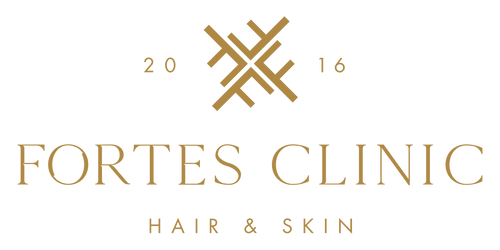Hair loss can be a distressing experience, affecting not only our physical appearance but also our self-esteem and emotional well-being. Alopecia, a condition which leads to hair loss, comes in various forms, each with its own set of symptoms and implications. In this article, we will delve into the world of alopecia symptoms, exploring the different types of alopecia, the common and less common symptoms associated with them, when to seek medical advice, potential underlying causes, treatment options, and ways to cope with the challenges it presents.
We provide information on the causes of hair loss, possible conditions that cause this and options for treatment.
Introduction
Imagine waking up one day and noticing small, round patches of hair missing from your scalp. Or perhaps you’ve been noticing a gradual thinning of your hair over time. These are just a couple of scenarios that individuals with alopecia might experience. Alopecia, derived from the Greek word “alopex” meaning fox, is a term used to describe a range of hair loss conditions. It’s crucial to recognise and understand the symptoms associated with alopecia to take timely action.
Types of Alopecia
Alopecia comes in different forms, each with its unique characteristics and patterns. Some of the most common types include:
Androgenetic Alopecia
This is often referred to as male or female pattern baldness. It’s characterised by gradual hair thinning on the scalp, typically starting at the crown or temples. While genetics play a significant role, hormonal changes can also contribute to its onset.
Alopecia Areata
Alopecia areata presents as small, round patches of hair loss on the scalp and other parts of the body. It’s an autoimmune disorder where the immune system mistakenly attacks hair follicles, leading to hair loss.
Alopecia Totalis and Alopecia Universalis
In some cases, alopecia areata can progress to alopecia totalis, resulting in complete hair loss on the scalp. An even more extreme form is alopecia universalis, where hair loss extends to the entire body. These variations can have a profound impact on an individual’s physical appearance and emotional well-being.
Common Alopecia Symptoms
Hair Loss in Small, Round Patches (Alopecia Areata)
One of the hallmark signs of alopecia areata is the sudden appearance of small, circular bald spots on the scalp or other hair-bearing areas. These patches are usually smooth and devoid of hair, and they can vary in size.
Gradual Thinning on the Scalp (Androgenetic Alopecia)
Androgenetic alopecia, the most common type, leads to gradual hair thinning over time. It’s not just limited to men; women can also be affected. Receding hairlines, widening part lines, and a more visible scalp are typical symptoms.
Complete Hair Loss on the Scalp (Alopecia Totalis)
As alopecia areata progresses, it can lead to the complete loss of scalp hair, known as alopecia totalis. This can be an emotionally challenging experience, affecting a person’s confidence and self-image.
Total Hair Loss on the Body (Alopecia Universalis)
Alopecia universalis takes hair loss to the extreme, affecting hair all over the body. This includes eyebrows, eyelashes, and even body hair. The absence of hair can lead to temperature sensitivity and a need for additional sun protection.
Changes in Nail Texture and Appearance
Interestingly, alopecia can also affect the nails. Individuals might notice pitting, ridges, or other changes in nail texture. This can be an additional indicator of underlying autoimmune activity.
Burning or Itching Sensation on the Scalp
Some individuals with alopecia might experience a burning or itching sensation on the scalp before hair loss becomes apparent. This discomfort can be attributed to the inflammation triggered by the immune system.
Less Common Alopecia Symptoms
Exclamation Mark Hair
Exclamation mark hair refers to short, broken hairs that appear narrower close to the scalp and gradually widen towards the tip. This phenomenon is commonly seen at the edges of bald patches in alopecia areata.
Pitting and Ridging of Nails
In addition to changes in nail texture, alopecia can cause nails to become brittle, pitted, or ridged. Monitoring nail health can provide further insights into the progression of the condition.
Secondary Changes in Self-Esteem and Emotional Well-being
Beyond the physical symptoms, alopecia can lead to emotional challenges. Changes in appearance can impact self-esteem, body image, and overall mental health. Seeking support from friends, family, or mental health professionals is essential.
When to See a Doctor
Importance of Timely Diagnosis
If you notice any unusual hair loss patterns or changes in your nails, seeking medical advice is crucial. Timely diagnosis can lead to effective management and potentially slow down the progression of hair loss.
Consulting a Dermatologist
A dermatologist specialises in diagnosing and treating skin, hair, and nail disorders. They can perform a thorough examination, review your medical history, and recommend appropriate diagnostic tests.
Diagnostic Procedures
Physical Examination of the Scalp and Nails
During a physical examination, a dermatologist will carefully inspect your scalp and nails for any signs of alopecia. They might use a magnifying tool to get a closer look at the affected areas.
Pull Test and Hair Shaft Examination
The pull test involves gently tugging on a group of hairs to determine how many come out. Additionally, examining shed hair under a microscope can provide insights into the hair’s health and potential causes of hair loss.
Biopsy for Definitive Diagnosis
In some cases, a dermatologist might recommend a scalp biopsy to confirm the diagnosis. This involves taking a small sample of skin from the affected area for laboratory analysis.
Possible Underlying Causes
Autoimmune Disorders
Many types of alopecia, including alopecia areata, have autoimmune origins. In these cases, the immune system mistakenly attacks hair follicles, triggering hair loss.
Genetics and Family History
Genetics play a role in androgenetic alopecia. If you have a family history of hair loss, you might be more prone to developing this condition.
Environmental Triggers
Certain environmental factors, such as stress, can exacerbate hair loss. While stress doesn’t directly cause alopecia, it can worsen symptoms in individuals predisposed to the condition.
Treatment Options
Topical Medications
Topical treatments, like minoxidil, can help slow down hair loss and promote regrowth. These are often available over the counter and are suitable for mild cases.
Oral Medications
Prescription oral medications, such as finasteride, can be effective in treating androgenetic alopecia by targeting hormonal factors contributing to hair loss.
Injections
For alopecia areata, corticosteroid injections into the affected areas can help suppress the immune response and encourage hair regrowth.
Hair Restoration Procedures
Hair transplant procedures involve moving hair follicles from areas with healthy hair growth to areas of thinning or baldness. This can provide natural-looking results.
Psychological Support
Coping with hair loss can be emotionally challenging. Seeking support from therapists or support groups can provide a safe space to discuss feelings and strategies for managing the impact of alopecia.
Coping with Alopecia
Building Self-Confidence
Accepting changes in appearance is a journey. Building self-confidence involves acknowledging your worth beyond your physical attributes and embracing your unique qualities.
Support Groups and Counselling
Connecting with others who are experiencing similar challenges can provide a sense of belonging and understanding. Counselling can equip individuals with coping strategies and emotional tools.
Wearing Wigs, Scarves, and Head Coverings
Many individuals opt for wigs, scarves, or head coverings to manage their appearance and boost self-confidence. These options can be fun and empowering ways to express personal style.
Prevention and Lifestyle Considerations
Maintaining Hair and Scalp Health
Even if you’re not dealing with hair loss, maintaining good hair and scalp hygiene is essential. Regular washing, conditioning, and avoiding harsh chemicals can keep your hair in optimal condition.
Stress Management
While stress doesn’t directly cause alopecia, managing stress can contribute to overall hair and scalp health. Engaging in relaxation techniques, exercise, and mindfulness can help.
Balanced Diet and Nutritional Supplements
Eating a well-rounded diet rich in vitamins and minerals can support hair health. Nutritional supplements, under the guidance of a healthcare professional, can also provide additional support.
Future Outlook
Ongoing Research and Advances in Treatment
The field of dermatology is continuously evolving. Researchers are exploring new treatment modalities, from stem cell therapies to novel medications, with the potential to revolutionise alopecia management.
Promising Therapies on the Horizon
Exciting advancements are on the horizon, offering hope for individuals with alopecia. Keep an eye out for upcoming treatments that could transform the way we approach hair loss.



